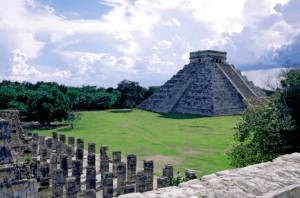The Fact Behind Whether a Native American Government Encouraged the US Constitution (Part1)
The Fact Behind Whether a Native American Government Encouraged the US Constitution (Part1)
In This Review
In 1987 it was the year that the United States celebrated the 200th anniversary of the Constitution. The bicentennial sparked a lot of discussion about the convention in Philadelphia which resulted in the Constitution being presented to states to be ratified. The celebrations and debates an old theory came up to a heated debate among historians and scholars. In 1988, and followed by lobbying interest groups and the US Congress adopted an act “aEUR|to acknowledge the contribution of the Iroquois Confederacy of Nations to the development of the United States Constitution”. In the words of Congress, many of the democratic principles which were incorporated into the constitution itself” were derived from the Iroquois. The resolution immediately sparked controversy with historians and scholars. Historical scholars argued that the evidence in support of the resolution was insufficient, and the evidence in opposition to the idea was far more convincing than evidence that supported the resolution.
How to Know if Your Country is For Sell
When the excitement over the Constitutional bicentennial ended and the concept dwindled with it, only to resurface once more through social media. There is no evidence that can be found in documents that prove that the Iroquois government being a topic of debate during the convention. The convention didn’t keep official minutes of their debates and discussions however, a number of participants kept meticulous notes. James Wilson’s (Pennsylvania) personal notes discuss the Iroquois type of government but they don’t discuss its merits. Benjamin Franklin and George Washington were definitely aware of the Confederation and had negotiated with them. John Adams was also aware of the Iroquois system of government which he did not approve of. The debate is how much you believe that both the US Constitution and the American republic owe their form in government and structure to Confederation of the Iroquois.
1. The Confederation of the Iroquois in the 18th century.
Prior to the arrival of Europeans to the New World, the Native American tribes in what is now New York State and southern Canada were at war with one another over hunting areas and slaves as well as property. According to oral legends, Hiawatha, a leader of the Onondaga people, joined with Dekanawidah (Peacemaker) on an effort to bring together five tribes to form a confederation with a single, unified government. Five tribes were formed the first confederacy, dubbed the Haudenosaunee (People from the Long House), named after the council house, where the Sachems, who represented the distinct tribes, would discuss tribal issues. At first, the five tribes comprised those of the Mohawk, Oneida, Onondaga, Cayuga, and Seneca. The Mohawk resided in the easternmost portion within the tribal areas and were tasked with guarding the eastern flank. The Seneca is the largest of the tribes of the confederacy performed a similar function on the western side.
Sri Lanka Economic Collapse, What Country is Next?
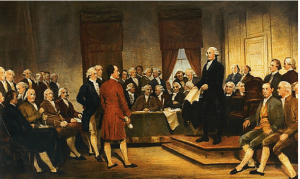
In 1722 In 1722, the Tuscarora were the last tribe, was admitted to the union, were admitted following their migration from the region of the Carolinas until the today’s New York. The five original clans in the Confederacy were able to send their sachems and representatives to the Great Council, the Tuscarora were represented by the Cayuga. Sachems’ numbers in each tribe was determined through the positions of the tribes as well as the land they controlled. The Great Council was comprised of fifty sachems. Great Council, with the largest number allocated to Onondaga. Despite the later claims that claimed Iroquois unity, which was established in the Great Council, the Iroquois did not stay united throughout the time during the American Revolution. For instance the Mohawk was a part of those of the British in the conflict, and so do Seneca, the Onondaga, Cayuga, and Seneca. The Oneida were fighting alongside American patriots as did several from the Tuscarora.
2. The members of the Confederation believed that they were a selected people
The main reason for this was the language. the tribes that comprised the Iroquois identified themselves as the Ongwehoneh which means “real human beings”. What that means for other members of other tribes as well as for Europeans who have settled in the region, is entirely in the eyes of the beholder. According to oral traditions which is the sole document from the precolonial periodis that the Peacemaker clarified the relation to the other tribes (later six) which was symbolized by removing an archer from each tribe, and they were joined. The arrows symbolized peace as well as Justice, Reason and Health. They also represented Righteousness and Health. The arrows were later used to claim that of the United States included arrows in the Great Seal based on the Iroquois images. In the initial version of the Great Seal, 13 arrows are visible in the talon of an eagle. This represents the original states of 13. The Congressional committee who created the seal did not make reference to the Iroquois in their deliberations or in their notes.
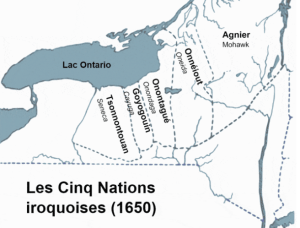
The confederation had peace and relationship between the tribes of its members but they were in conflict with their competitors, including for example, the Huron and Wyandot from Lakes, as well as the Shawnee as well as the Miami of Ohio as well as those of the Cherokee from and the Carolinas as well as Tennessee. Canadian tribes, such as the Erie, Abenaki, and other tribes, were under pressure from Iroquois expansion. The Mohawk was identified by the confederation as being the “Keepers of the Eastern Door” earned the status of fierce warriors, known for their brutality towards prisoners. In the Beaver Wars of the 17th century, Mohawk and other warriors of the Iroquois engaged in battle with the Huron and other tribes of the west determined to secure an absolute monopoly over the trade in furs with Europeans. In the Beaver Wars that European traders first began to supply the Iroquois with guns, and French traders attempted to dismantle the confederation through making separate agreements with the individual tribes.
3. The Beaver Wars resulted from increasing trade between the Iroquois and the Europeans
The arrival of Europeans within the territory of the Iroquois which, at the time, was comprised of five tribes, brought conflict at first, but was soon and then trade relationships. They were French in the northern part as well as those of the Dutch, Swedes, and British to the east of the Iroquois areas set up trading posts, which created an enormous demand for pelts, especially beaver pelts. In exchange for the commodities the traders provided tools made of metal including pots and pans blankets made of cloth, knives and in some cases firearms to the Native chiefs. They also benefited from the prestige they gained among their families. Prior to the arrival of Europeans the Iroquois were essentially Stone Age people. Their weapons were made of stones and flint; spears, clubs archers, spears, and knives made of sharpened flint or oyster shells. They were happy to trade the seemingly infinite supply of beaver to the newcomers in exchange for the items they that they offered.

At the time of the 17th century the beaver population of their areas along the St. Lawrence and the Finger Lakes and their tributaries was drained and the Iroquois turned west to their west to the Great Lakes and the Ohio region to expand their territory. The alliances formed between the Iroquois as well as the British colonies grew stronger, so did those between those of the French as well as those of the French, Huron, Susquehannock, and the Abenaki. The decision to wage battle with their neighbors was taken through the Great Council of the Iroquois with the help of the assembled Sachems. It was during the Beaver Wars led to the almost complete extermination of some tribes, like the Mohican. It also affected the trade in fur and led to the Iroquois expanding their territory to their Ohio country, which forced out tribes like the Shawnee, Huron, Wyandot and Cherokee. In the early 1700s, conflict among tribes like the Iroquois along with other tribes were becoming common.
Top 10 Religions In The World, Beliefs, History, Premise
4. Iroquois government was built in the Great Law of Peace
The Great Law of Peace, that established the relationships as well as the roles for each of the five (later six) tribes of the Iroquois Confederation It was not initially written. It was initially inspired by oral traditions. Then the tradition was recorded with symbols found in the wampum belts. Each of the five tribes spoke in a similar way and used their own customs and symbols in their recordings of their history. In the end, various variations of the Iroquois “constitution” exist. Within the tribes that are distinct various versions of its historical background exist. The Onondaga for instance is a multi-faceted version. The Oneida are among them that is based on oral traditions within a particular family, which is related to the Oneida Shenandoah who was consulting to Benjamin Franklin during the writing of the United States Constitution. There is no evidence to support this claim. to exist, however, the news on the subject in 1997 led to an ongoing debate about Iroquois contribution in American democracy.
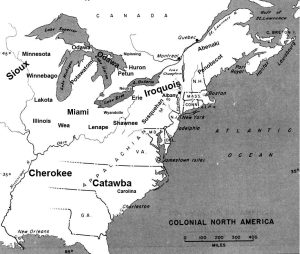
The year was 1885. Seth Newhouse, a half Mohawk and half Onondaga with the Iroquois name Dayodekane, delivered an unwritten edition of the Great Law of Peace to the Grand River Council. The Grand River Council was the authority for the Six Nations of the Grand River reservation in Ontario. The council did not support Newhouse’s interpretation of the law. The various variants of the Great Law of Peace, in English translations, have the same provisions that are not in other or with different words. The fact that there are different versions on the Great Law among the participatory tribes indicates that it was considered differently by different tribes, and they interpreted it differently in addition. It is also evident that the Great Law changed over time and in its repetitious oral recitations, as well as in the interpretive of the Wampum Belts in various languages as well as to English.
5. Relations with the colonial Iroquois provided the basis for their confederation
The colonial administration had to deal with the Iroquois in both war and peace. They comprised the government of British North American colonies, the governors of New France, and their civilian and military representatives. Many transactions that took place in colonial America didn’t clearly define who was the owner of what. The Iroquois frequently ceded or sold land under treaties to other Native tribes that were not part in their confederation. This included, at various times in the past, the land that was between the River Shenandoah as well as the Ohio and was then which was sold to the colonial government of Virginia. They renounced the land of Pennsylvania in a series treaties, in addition to the in upstate New York, most of the Ohio Country, land around the Great Lakes, and other vast tracts they claimed to be theirs when they negotiated with representatives from the colonial government.
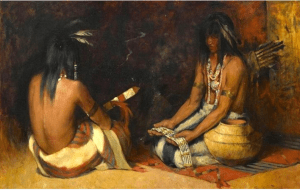
The lands given into British America were claimed by other tribes and then repelled from them from them by Iroquois fighters in the Beaver Wars and other conflicts. The conflicting claims as well as the acquisition of new lands resulted in frequent contact between Iroquois Sachems and colonial leaders during the period leading up until the American Revolution. American officials, such as Benjamin Franklin and George Washington were familiar of their fellow Iroquois and their system of government. Franklin worked with them as a diplomat in negotiation of treaties as well as land purchases. Washington was involved the tribes as an surveyor and later, as an enemy soldier. Both were able to comprehend the significance that was the Iroquois Confederation and its influence on tribes not part of it. Others Americans were aware of these as well, including Daniel Boone, the Clark brothers George Rogers and William, and even John Adams, who studied the system of government they had.

